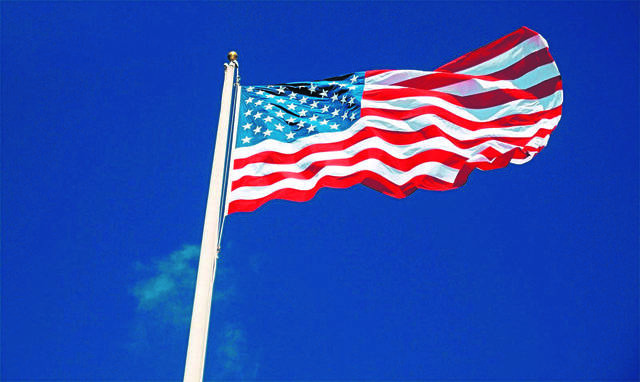John Oyler: Abood, Calabro and Shady
Share this post:
The November program meeting for the Bridgeville Area Historical Society was an outstanding presentation by Georgeanne Abood Henson about three very special members of the Greatest Generation — her grandfather, George Abood; his cousin, George Shady; and their boyhood friend and neighbor, Peter Calabro. These three young men grew up together in the Baldwin Street neighborhood, served as Army Air Force crewmen in World War II, were shot down, and ended up in the same prisoner of war camp.
Henson began her talk with George Shady. He was a radio operator and ball turret gunner on a B-24 Liberator at Hethel Air Base in England. On his 18th mission, on Feb. 22, 1944, his plane was heavily damaged over Brunswick, Germany. With the plane on fire, the crew bailed out. Shady ended up in enemy hands, eventually at Stalag Luft IV, in Tychowo, Poland, with 8,000 other Allied airmen.
Henson displayed a number of his censored letters home.
Shady’s cousin, Sgt. George Abood, was a crewman — left waist gunner — on a B-24, also flying out of Hethel Air Base. Henson displayed several photographs of Abood and Calabro, who had been together in a training camp in Florida before being shipped overseas.
Abood’s combat record included eight missions before his plane was shot down over St. Lo, France on July 25, 1944.
After being captured, Abood was sent to Stalag VI in what is now Lithuania. Eventually, he too was transferred to Stalag Luft IV. One of Shady’s letters home includes a statement that he was “taking good care of Boots,” which was Abood’s nickname.
Calabro was a waist/top turret gunner on a B-17, flying out of Amendola Air Base in southeastern Italy. On his 30th mission, on Sept. 20, 1944, his plane was severely damaged in a raid over Budapest. After bailing out, he was captured in Banjaluka, Yugoslavia.
Calabro arrived at Stalag Luft IV in mid-November, where he was reunited with Abood and Shady. Early in 1945, the Germans began to move the prisoners west. Calabro was moved by train, Abood and Shady were forced to participate in the “Black March,” an ordeal covering 500 miles on foot lasting two months, often in blizzard conditions. About halfway through the march, Shady became deathly ill. He credited Abood with carrying him the rest of the way.
Eventually all three were repatriated by the Allies, nursed back to health, and returned to their homes, where they reared families and became role model citizens. Despite the horrors they experienced, each of them was able to conquer his personal traumas.
Many thanks to Henson for reminding us of their contributions. A brochure based on her comments and artifacts would be a fine project for the historical society.
There will be no historical society presentation in December. Instead, people are invited to visit the History Center and purchase a copy of the 2020 calendar. Once again, Karen Godwin and Ryan Thomazin have produced a calendar full of relevant local history and photographs.
After the holidays, the society will revert to its winter schedule. On Jan. 20, 2020, Dana Del Bianco will discuss “Roza Shanina, a Soviet Sniper in WWII,” in the Chartiers Room, Bridgeville Volunteer Fire Department.


